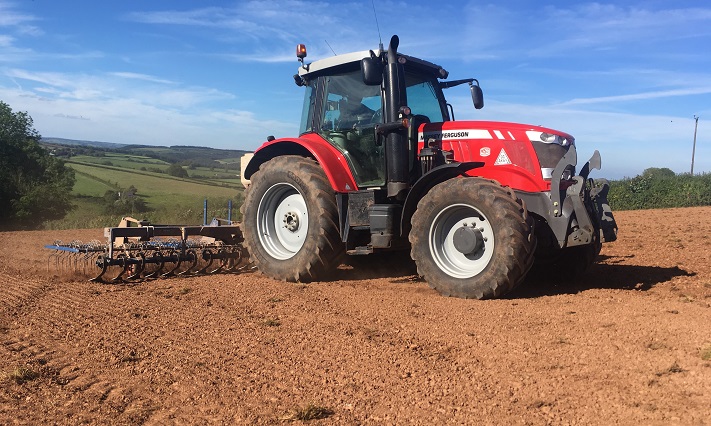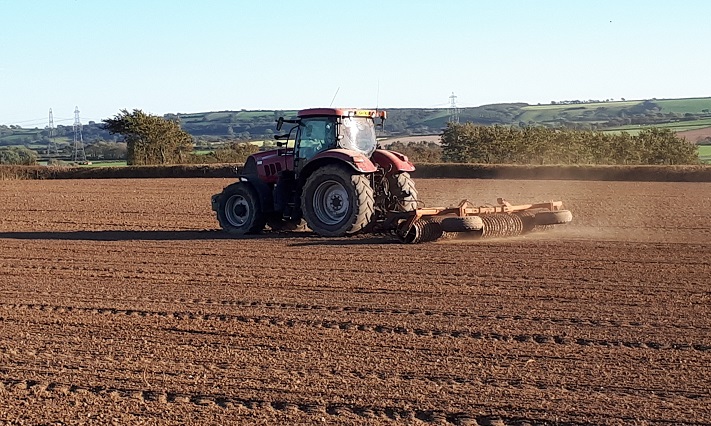Maximising returns from autumn reseeds
Boost grassland productivity by putting in a new reseed.
Less than three per cent of UK grassland is reseeded, which means many farmers are missing out on the higher yields and better nutritional qualities of new grass varieties introduced by grass breeding companies every year.
And it is not as if sward composition remains static. In fact, feed quality in fields is an ever-moving feast and declines over time. Ten years after reseeding with a 100% perennial ryegrass mixture, just 25% of the sown species may remain. The rest will be made up of much poorer performing weed grasses.
Trials in Ireland have shown that 100% perennial ryegrass swards grew 2.7t DM/ha more grass than a 15% perennial ryegrass sward and gave a far better return on nitrogen applications. Most of the difference occurs in the spring up to mid-May.
With regular reseeding the grass growth capacity of a farm can be increased significantly and the annual return on investment can be large – as much as £500/ha/year over five years, in terms of increased cow performance.

Reseeding can:
- Increase the overall productivity of the farm
- Increase carrying capacity
- Allow higher animal output
- Increase grass quality
- Increase response to fertiliser
- Increase grass utilisation
- Introduce new, better performing grass and clovers
From Pocket manual for Reseeding, Moorepark
Time of sowing
Reseeding in England and Wales tends to be carried out in autumn as this is a more reliable time of year for weather. On the Oliver Seeds trials farm near Cheltenham, 30-year rainfall measurements show August to be the wettest month and warm, moist soils are the most conducive to rapid grass establishment. The ley then has the chance to bed in through winter and is ready for rapid growth the following spring.
A spring reseed can also be successful, but all grasses apart from westerwolds need a winter to vernalise.
“Reseeding needs careful planning,” says John Harris, a BASIS registered seed adviser with Oliver Seeds.
“At £369/ha for overseeding and up to more than £566/ha for a full reseed, farmers should regard this as an investment for the future, rather than just as an added cost. This could be anything from a one year in five to a one year in ten operation, so it is worth getting it right.”
First steps
John Harris suggests that grassland farmers should be renewing up to 20% of their farms each year.
“The first step is to decide which field needs reseeding. Ideally these should be the lowest performing fields. Farmers who regularly measure their grass will know which are the worst. Counting the number of silage trailers coming from each field can also act as a rough guide to the tonnages being grown.
“If a farmer does not have these figures, he should walk the fields regularly to assess how many sown species are still growing and the level of broad-leaved weed infestations. Are there any compaction or drainage issues that need rectifying before reseeding?
“Taking a soil test is essential and applying P and K to bring the soil index up to 3 if needed. The minimum pH is 6.5. If it is lower than this, lime should be added.”

Mr Harris continues: “The next step is to decide precisely what the new ley will be for. Will it be grazed or conserved or both? What is the soil type and rainfall and what is the fertiliser regime?
“Farmers should challenge their seed adviser to provide a mixture for the specific field and make sure the varieties are on the Recommended Grass and Clover List.
“For example, Oliver Seeds has a wide range of mixtures, from Tornado, a catch crop ryegrass for cutting or grazing producing 21t DM/ha, to Megabite a high-quality grazing mixture for intensive cattle grazing systems, to Landmark Extreme, a highly productive and persistent mixture for cutting and grazing on adverse sites.”
Preparation and sowing
The target turnaround in which to get a reseed back into production should be 60 days. This time out can be minimised by cultivating seven to ten days after spraying off the old grass.
Cultivation choice will depend on soil type and structure and machinery availability. Crucially, a fine, firm and level seedbed is required as grass and clover seeds are very small. Rolling once before sowing is advisable as it stops seeds going too deep. Rolling two more times post sowing will ensure good soil to seed contact.
“Keep a close eye on the field as the grass seed germinates and check for slugs and broad-leaved weed seedlings. It is much more cost effective to spray baby docks and thistles in the autumn, than waiting until the spring when they will be more established. A light grazing before winter will encourage tillering and a denser sward.
“Do not ignore a young reseed; continue to monitor performance and ensure nutrients are in balance and weeds controlled for best and long-lasting results.”
This article first appeared in Farmers Guide, June 2020
